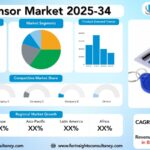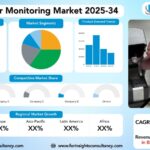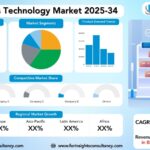
Anti-Aging Supplements Market Trends t By Product Type (Collagen, Omega-3 fatty acids, Antioxidants, Resveratrol, Coenzyme Q10, Vitamins, and Minerals), By Form (Pills/capsules, Powder, and Liquid) & Region (North America, Europe, APAC, MEA, South America) - Global Forecast to 2030
Pages: 300 | Aug-2024 Formats | PDF | Category: Pharma and Healthcare | Delivery: 24 to 72 Hours
Anti-Aging Supplements Market Overview
Anti-Aging Supplements Market is expected to grow rapidly at 7.3% CAGR consequently, it will grow from its existing size of from $13.1 Billion in 2023 to $22.6 Billion by 2030.
For Insights Consultancy presents an extensive market analysis report titled “Anti-Aging Supplements Market Report 2024″providing businesses with an edge in competition by providing a thorough analysis of market structures with estimates for various segmentations and segments.
The report also focuses new trends, major drivers, challenges, as well as opportunities. The report provides all necessary information needed to thrive in the Anti-Aging Supplements industry. This report is about Anti-Aging Supplements market research provides a complete analysis, which includes a comprehensive analysis of the current and future trends in the market.
The anti-aging supplements market is experiencing significant growth driven by the increasing desire for health, wellness, and longevity.
- Consumer Trends: Growing awareness of aging and the desire to maintain youthful appearance are driving market demand.
- Product Innovation: Advancements in ingredient formulation and delivery systems are fueling product development.
- Distribution Channels: Strong retail presence and e-commerce platforms are enhancing market reach.
Key market players include established health and wellness companies as well as emerging brands focused on anti-aging solutions. While the market offers substantial growth opportunities, challenges such as regulatory compliance, consumer skepticism, and competition from other wellness products persist.
Get Sample Copy– https://forinsightsconsultancy.com/reports/request-sample-anti-aging-supplements-market/
Market Trends 2024
The anti-aging supplements market is experiencing significant growth driven by increasing consumer awareness of health and wellness, coupled with advancements in product formulation and delivery.
- Consumer Focus: A growing emphasis on preventative healthcare, longevity, and maintaining youthful appearance is driving demand.
- Product Innovation: Advancements in ingredient sourcing, formulation, and delivery systems are leading to new and improved anti-aging products.
- Regulatory Environment: Increased regulatory scrutiny is shaping product development and consumer trust.
- Global Expansion: Emerging markets are contributing to market growth as consumer incomes rise and awareness of anti-aging benefits increases.
The market is characterized by a diverse range of products, including vitamins, minerals, herbal supplements, and functional foods. As consumers seek natural and effective solutions to support aging, the anti-aging supplements market is poised for continued growth.
Market Dynamics
Growth Drivers
- Rising Aging Population: The increasing number of elderly individuals worldwide is driving demand for anti-aging supplements. As people age, they seek products that can help them maintain health, vitality, and a youthful appearance, contributing to market growth.
- Growing Health and Wellness Awareness: There is a growing awareness of health and wellness, with more individuals focusing on preventive health measures and seeking supplements that support overall well-being and slow down the aging process.
- Advancements in Nutritional Science: Innovations and advancements in nutritional science and research are leading to the development of new anti-aging supplements with enhanced efficacy. Scientific studies that validate the benefits of certain ingredients help boost consumer confidence and drive market growth.
- Increased Focus on Beauty from Within: The trend towards “beauty from within” is promoting the use of anti-aging supplements. Consumers are increasingly looking for solutions that improve skin health, elasticity, and appearance from the inside out.
- Expansion of Online Retail Channels: The growth of e-commerce and online retail channels has made it easier for consumers to access and purchase anti-aging supplements. Online platforms offer convenience, a wider product range, and often, detailed product information and reviews.
- Rising Disposable Incomes: Increased disposable incomes in emerging economies allow consumers to spend more on health and wellness products, including anti-aging supplements. Higher spending power drives market growth in these regions.
- Celebrity Endorsements and Marketing: Endorsements by celebrities and influential figures in health and wellness can boost the popularity of anti-aging supplements. Effective marketing campaigns and social media presence also contribute to increased consumer interest.
- Innovative Product Offerings: The development of innovative anti-aging supplement formulations, such as those incorporating novel ingredients or delivery systems, attracts consumers looking for cutting-edge solutions.
Restraints
- Lack of Regulatory Oversight: The dietary supplement industry often faces challenges related to regulatory oversight and quality control. Concerns about the efficacy and safety of anti-aging supplements due to inconsistent regulations can deter consumers.
- High Market Competition: The anti-aging supplements market is highly competitive, with numerous brands and products available. Intense competition can lead to market saturation, pricing pressures, and challenges in differentiating products.
- Limited Scientific Evidence: Despite advancements, there is often limited or inconclusive scientific evidence supporting the effectiveness of many anti-aging supplements. This lack of robust clinical evidence can impact consumer trust and willingness to purchase.
- Potential Side Effects and Interactions: Some anti-aging supplements may have potential side effects or interactions with other medications. Concerns about adverse effects and the need for personalized recommendations can limit consumer adoption.
- High Costs: Premium anti-aging supplements can be expensive, which may limit their accessibility to a broader audience. High costs can be a barrier for price-sensitive consumers and impact market growth.
- Consumer Skepticism: Skepticism regarding the claims made by anti-aging supplements and the effectiveness of these products can hinder market growth. Consumers may be cautious about investing in supplements with uncertain benefits.
- Regulatory and Legal Challenges: Different countries have varying regulations for dietary supplements, which can create barriers for companies looking to enter international markets. Navigating regulatory requirements and compliance can be complex and costly.
- Lack of Standardization: The absence of standardized formulations and quality control practices can lead to variations in product quality and efficacy. Inconsistent product quality may affect consumer confidence and market stability.
The anti-aging supplements market is driven by factors such as the rising aging population, growing health and wellness awareness, advancements in nutritional science, increased focus on beauty from within, expansion of online retail channels, rising disposable incomes, celebrity endorsements, and innovative product offerings. However, challenges such as lack of regulatory oversight, high market competition, limited scientific evidence, potential side effects and interactions, high costs, consumer skepticism, regulatory and legal challenges, and lack of standardization present significant restraints. Addressing these challenges through improved regulation, robust scientific research, effective marketing, and ensuring product quality will be essential for the sustained growth and success of the anti-aging supplements market.
Market Segment Analysis
The anti-aging supplements market is driven by the growing desire for health, wellness, and youthful appearance.
Market Segmentation
- Ingredient Type: Antioxidants, peptides, vitamins, minerals, and botanical extracts.
- Product Form: Tablets, capsules, powders, and liquids.
- Distribution Channel: Online retail, specialty stores, pharmacies, and supermarkets.
The market is characterized by a focus on product innovation, consumer education, and the development of effective anti-aging solutions. As consumer awareness of health and wellness increases, the demand for anti-aging supplements is expected to continue growing.
By Product Type
- Collagen
- Omega-3 fatty acids
- Antioxidants
- Resveratrol
- Coenzyme Q10
- Vitamins
- Minerals
By Form
- Pills/capsules
- Powder
- Liquid
Competitive Landscape
The anti-aging supplements market is experiencing growth driven by increasing consumer awareness of health and wellness, coupled with the desire to maintain a youthful appearance.
Key Market Players
Established Nutritional Companies: Companies like Nestlé Health Science, Amway, and Herbalife Nutrition offer a wide range of anti-aging supplements as part of their overall health and wellness portfolio.
Vitamin and Supplement Retailers: Companies like GNC and Swanson Health Products offer a variety of anti-aging supplements alongside other nutritional products.
Specialized Supplement Manufacturers: Companies like Biosil focus on specific anti-aging ingredients and target niche markets.
- Amway Corporation
- Nu Skin Enterprises, Inc.
- Allergan, Inc. (now part of AbbVie)
- Glanbia plc
- BioTech USA
- Beiersdorf AG
- Unilever
- The Nature’s Bounty Co.
- Blackmores Limited
- NeoCell Corporation (now part of Clorox Company)
The market is characterized by a diverse range of products, including vitamins, minerals, herbal extracts, and collagen supplements. As consumer interest in anti-aging solutions continues to grow, the market is expected to expand further.
New Developments
In 2023,Nestle Health Science unveiled a breakthrough probiotic supplement featuring carefully researched strains that promote cellular longevity and combat age-related decline. This game-changing supplement targets gut health, a key aspect of the aging process, with the overarching goal of boosting immunity, optimizing nutrient absorption, and overall well-being.
Market Regional Outlook
- North America: A mature market with a strong focus on wellness and preventive healthcare.
- Europe: A well-established market with a focus on regulatory compliance and consumer trust.
- Asia-Pacific: A rapidly growing market driven by increasing disposable incomes and changing consumer lifestyles.
The market is characterized by a diverse range of products, including vitamins, minerals, and herbal supplements. As consumers become more proactive about their health and longevity, the demand for anti-aging supplements is expected to continue growing.
Frequently Asked Questions:
What is the current size of the Anti-Aging Supplements market?
Anti-Aging Supplements Market is expected to grow rapidly at 7.3% CAGR consequently, it will grow from its existing size of from $13.1 Billion in 2023 to $22.6 Billion by 2030.
Which key factors will influence the anti-aging supplements market growth?
The global anti-aging supplements market cap may grow owing to the due to the rising awareness of health and wellbeing amongst the aging population.
Which region will contribute notably towards the anti-aging supplements market value?
The global anti-aging supplements market growth is expected to be driven by Asia Pacific. It is currently the world’s highest revenue-generating market owing to creasing disposable earning and rising health recognition and robust pharmaceutical sector growth witnessed in countries such as China and India.
Which are the major players leveraging the anti-aging supplements market growth?
The global anti-aging supplements market is led by players like Amway Corporation, Nu Skin Enterprises, Inc., AbbVie (formerly Allergan), Glanbia plc, BioTech USA, Beiersdorf AG, Unilever, The Nature’s Bounty Co., Blackmores Limited, and NeoCell Corporation (now part of Clorox Company).
Key Benefits to Stakeholders:
- This study offers a quantitative examination of Anti-Aging Supplements Market trends, estimations, and dynamics from 2023-2030 to identify potential opportunities in this space.
- Porter’s five forces study emphasizes the value of buyers and suppliers in helping stakeholders to make profitable business decisions while expanding their network.
- Undergoing in-depth analyses on market size and segmentation is vital in identifying current Anti-Aging Supplements Market opportunities.
- Each region’s largest countries are mapped according to their revenue contribution for an accurate picture of this global industry.
- The Anti-Aging Supplements Market research report offers a thorough examination of its major players. As such, purchasing this report provides many advantages to any organization looking to enter this competitive industry.
Reasons to Purchase Anti-Aging Supplements Market Report:
- Current and Future Prospects of Anti-Aging Supplements Market in both developed and emerging markets.
- Porter’s Five Force Analysis to help analyze various perspectives within this market. Major regions should experience rapid increases during this time.
- Uncover the most up-to-date industry developments, Anti-Aging Supplements Market shares, and top market players’ strategies.
Buy this Report With 20% Discount- https://forinsightsconsultancy.com/buy-now-anti-aging-supplements-market
Table of Contents
- Anti-Aging Supplements Market: Market Introduction
1.1. Executive Summary & Market Overview
1.2. Market Size Snapshot (2024) & Forecast Analysis (2024-2030)
1.3. Market Size (USD) and Market Share (%) – by Segments, Regions and
Country
1.4. Key Takeaways for Holistic Brands
- Competitive Landscape
2.1. Market Competition Matrix (For Insight Consultancy Framework)
2.2. Key Players Benchmarking
➢ Company Name
➢ Offerings
➢ End-User Segment
➢ Revenue Details
➢ Market Shares
➢ Locations
2.3. Market Structure
➢ Market Leaders
➢ Market Followers
➢ Emerging Players
2.4. Mergers and Acquisitions Details
2.5. Competitive Differentiation Analysis
2.6. Innovation & Product Launches Analysis
2.7. Digital and E-commerce Strategy of Leading Players
- Market Dynamics
3.1. Anti-Aging Supplements Market Trends
➢ Biotechnology and Cosmeceuticals in Anti-Aging Trends
➢ AI & Personalized Supplementation Trends
➢ Plant-Based & Ayurvedic Anti-Aging Supplements
➢ NAD-Based Anti-Aging Supplements
➢ Holistic and Natural Anti-Aging Supplements
➢ Gut-Brain-Skin Axis in Anti-Aging” (Probiotics & Prebiotics for
longevity)
➢ Sustainability and Ethical Sourcing in Anti-Aging Supplements
3.2. Anti-Aging Supplements Market Dynamics
➢ Drivers
➢ Restraints
➢ Opportunities
➢ Challenges
3.3. PORTER’s Five Forces Analysis
3.4. PESTLE Analysis
3.5. Regulatory Landscape Analysis by Regions and Country
➢ North America
➢ Europe
➢ Asia-Pacific
➢ Middle East and Africa
➢ South America
3.6. Analysis of Consumer Preferences and Behavior by Region and Countries
➢ Popular platforms for supplement purchases (e.g., Amazon, iHerb)
➢ Regulatory implications for cross-border trade
➢ Demand for Clean Label & Non-GMO Supplements
➢ Influence of Influencers & Functional Medicine Doctors on
Purchases
- Anti-Aging Supplements Market: Global Market Size and Forecast by
Segmentation (by Value in USD) (2024-2030)
4.1. Global Anti-Aging Supplements Market Size and Forecast, by Ingredient
➢ Collagen
➢ Resveratrol
➢ Vitamins
➢ Minerals
➢ Hyaluronic Acid
➢ NMN
➢ Others
4.2. Global Anti-Aging Supplements Market Size and Forecast, by Application
➢ Hair, Skin, & Nail care
➢ Bone & Joint Health
➢ Energy & Stamina
➢ Others
4.3. Global Anti-Aging Supplements Market Size and Forecast, by
Formulation
➢ Capsules
➢ Tablets
➢ Powder
➢ Others
4.4. Global Anti-Aging Supplements Market Size and Forecast, by Distribution
Channel
➢ Hypermarkets/Supermarkets
➢ Pharmacies & Drug Stores
➢ Online
➢ Others
4.5. Global Anti-Aging Supplements Market Size and Forecast, by Region
➢ North America
➢ Europe
➢ Asia Pacific
➢ Middle East and Africa
➢ South America
- North America Market Size and Forecast by Segmentation (by Value in USD)
(2024-2030)
5.1. North America Anti-Aging Supplements Market Size and Forecast, by
Ingredient
5.2. North America Anti-Aging Supplements Market Size and Forecast, by
Application
5.3. North America Anti-Aging Supplements Market Size and Forecast, by
Formulation
5.4. North America Anti-Aging Supplements Market Size and Forecast, by
Distribution Channel
5.5. North America Anti-Aging Supplements Market Size and Forecast, by
Country
➢ United States
❑ US Anti-Aging Supplements Market Size and Forecast, by
Ingredient
❑ US Anti-Aging Supplements Market Size and Forecast, by
Application
❑ US Anti-Aging Supplements Market Size and Forecast, by
Formulation
❑ US Anti-Aging Supplements Market Size and Forecast, by
❑ Distribution Channel
➢ Canada
➢ Mexico
- Europe Market Size and Forecast by Segmentation (by Value in USD) (2024-2030)
6.1. Europe Anti-Aging Supplements Market Size and Forecast, by Ingredient
6.2. Europe Anti-Aging Supplements Market Size and Forecast, by Application
6.3. Europe Anti-Aging Supplements Market Size and Forecast, by Formulation
6.4. Europe Anti-Aging Supplements Market Size and Forecast, by Distribution
Channel
6.5. Europe Anti-Aging Supplements Market Size and Forecast, by Country
➢ Germany
❑ Germany Anti-Aging Supplements Market Size and Forecast,
by Ingredient
❑ Germany Anti-Aging Supplements Market Size and Forecast,
by Application
❑ Germany Anti-Aging Supplements Market Size and Forecast,
by Formulation
❑ Germany Anti-Aging Supplements Market Size and Forecast,
by Distribution Channel
➢ United Kingdom
➢ France
➢ Italy
➢ Spain
➢ Russia
➢ Rest Of Europe
- Asia Pacific Market Size and Forecast by Segmentation (by Value in USD) (2024-
2030)
7.1. Asia Pacific Anti-Aging Supplements Market Size and Forecast, by
Ingredient
7.2. Asia Pacific Anti-Aging Supplements Market Size and Forecast, by
Application
7.3. Asia Pacific Anti-Aging Supplements Market Size and Forecast, by
Formulation
7.4.Asia Pacific Anti-Aging Supplements Market Size and Forecast, by
Distribution Channel
7.5. Asia Pacific Anti-Aging Supplements Market Size and Forecast, by Country
➢ China
❑ China Anti-Aging Supplements Market Size and Forecast, by
Ingredient
❑ China Anti-Aging Supplements Market Size and Forecast, by
Application
❑ China Anti-Aging Supplements Market Size and Forecast, by
Formulation
❑ China Anti-Aging Supplements Market Size and Forecast, by
➢ Rest of APAC
- Middle East and Africa Market Size and Forecast by Segmentation (by Value in
USD) (2024-2030)
8.1. Middle East and Africa Anti-Aging Supplements Market Size and Forecast,
by Ingredient
8.2. Middle East and Africa Anti-Aging Supplements Market Size and Forecast,
by Application
8.3. Middle East and Africa Anti-Aging Supplements Market Size and Forecast,
by Formulation
8.4. Middle East and Africa Anti-Aging Supplements Market Size and Forecast,
by Distribution Channel
8.5. Middle East and Africa Anti-Aging Supplements Market Size and Forecast,
by Country
➢ South Africa
❑ South Africa Anti-Aging Supplements Market Size and
Forecast, by Ingredient
❑ South Africa Anti-Aging Supplements Market Size and
Forecast, by Application
❑ South Africa Anti-Aging Supplements Market Size and
Forecast, by Formulation
❑ South Africa Anti-Aging Supplements Market Size and
Forecast, by Distribution Channel
➢ GCC
➢ Rest of MEA
- South America Market Size and Forecast by Segmentation (by Value in USD)
(2024-2030)
9.1. South America Anti-Aging Supplements Market Size and Forecast, by
Ingredient
9.2. South America Anti-Aging Supplements Market Size and Forecast, by Application
9.3. South America Anti-Aging Supplements Market Size and Forecast, by
Formulation
9.4.South America Anti-Aging Supplements Market Size and Forecast, by
Distribution Channel
9.5. South America Anti-Aging Supplements Market Size and Forecast, by
Country
➢ Brazil
❑ Brazil Anti-Aging Supplements Market Size and Forecast, by
Ingredient
❑ Brazil Anti-Aging Supplements Market Size and Forecast, by
Application
❑ Brazil Anti-Aging Supplements Market Size and Forecast, by
Formulation
❑ Brazil Anti-Aging Supplements Market Size and Forecast, by
Distribution Channel
➢ Argentina
➢ Rest of South America
- Company Profile: Key Players
10.1. Amway Corporation
➢ Company Overview
➢ Business Portfolio
➢ Financial Overview
➢ SWOT Analysis
➢ Strategic Analysis
➢ Recent Developments
10.2. Nu Skin Enterprises, Inc.
10.3. AbbVie
10.4. Glanbia plc
10.5. BioTech USA
10.6. Beiersdorf AG
10.7. The Nature’s Bounty Co.
10.8. Blackmores Limited
10.9. NeoCell Corporation
10.10. Shaklee Corporation
10.11. Decode Age
10.12. Thorne
10.13. GNC Holdings, LLC.
10.14. Life Extension
10.15. Cureveda
10.16. Moon Juice
10.17. Hum Nutrition
10.18. Pure Encapsulations
11 Key Findings and Strategic Recommendations
- Anti-Aging Supplements Market: Research Methodology
Select PDF License
Single User: $3499
Multiple Users: $4499
Corporate Users: $5499








[…] purposes of this analysis are: To characterize, portray, and check the Global Anti-Aging Supplements Market based on product type, application, and region. To estimate and inspect the size of the […]